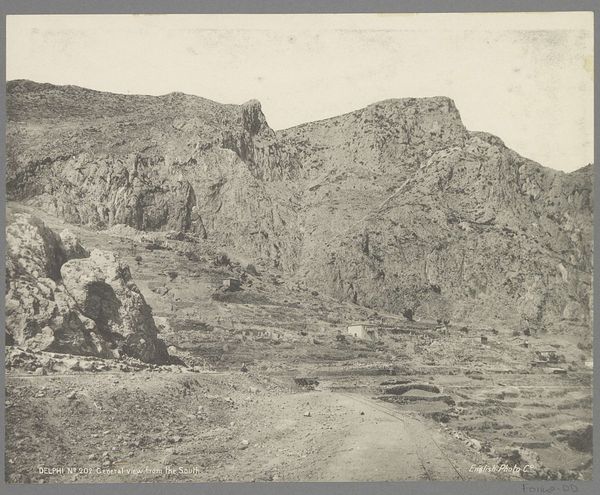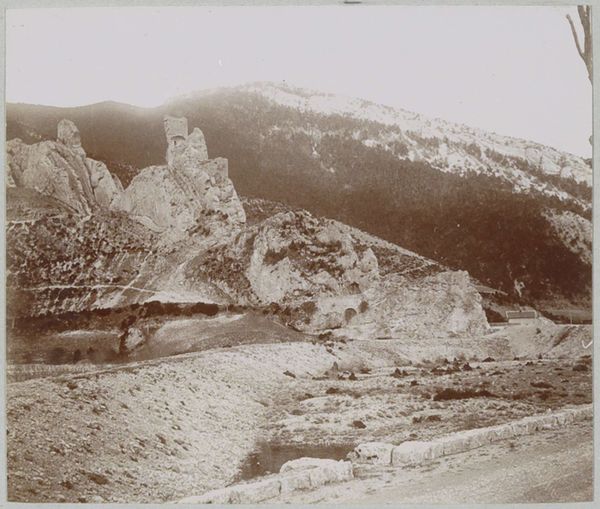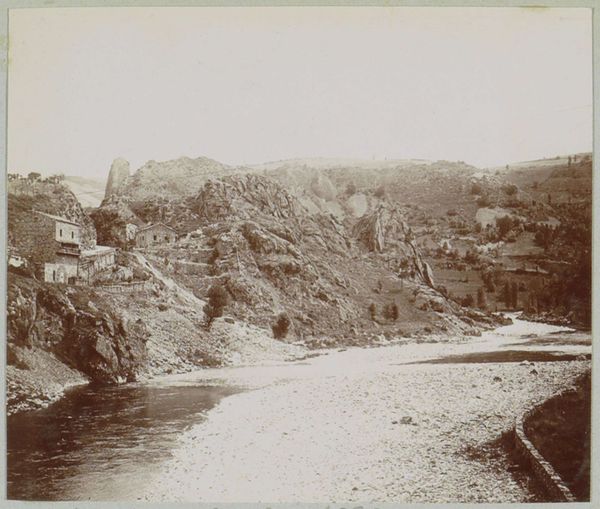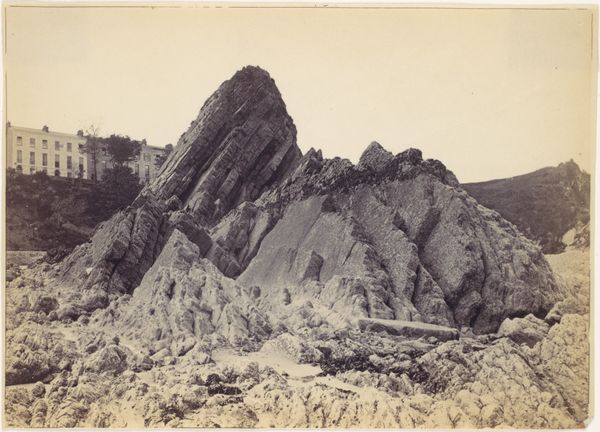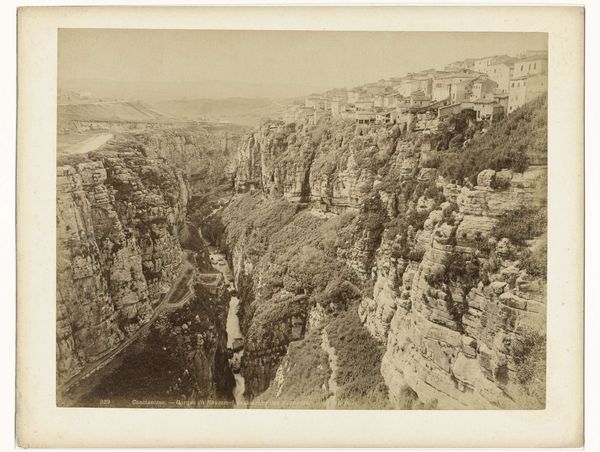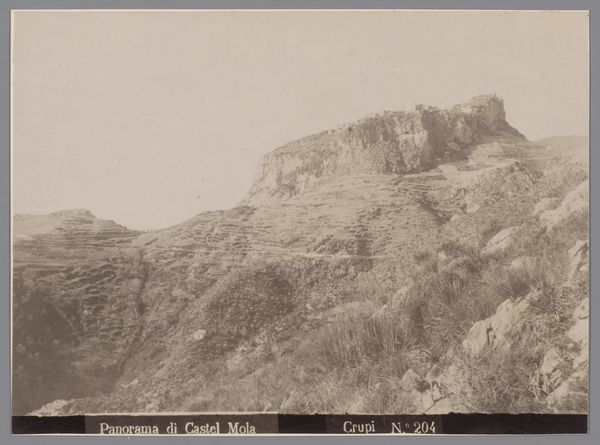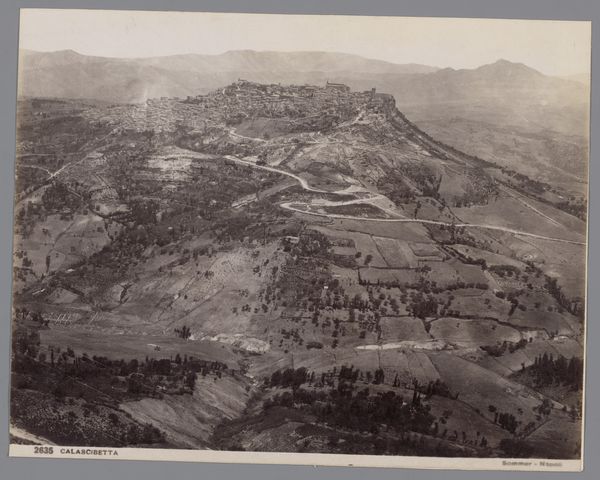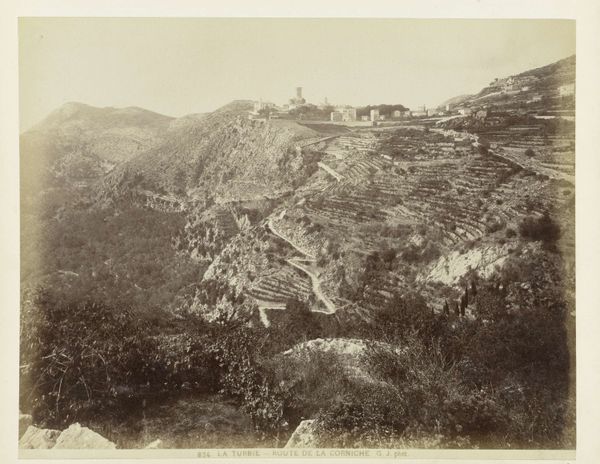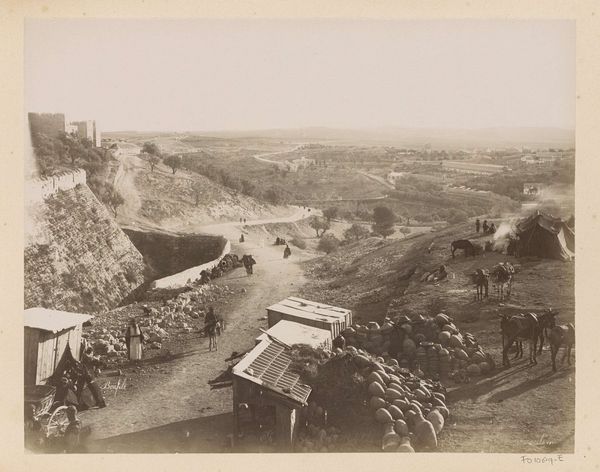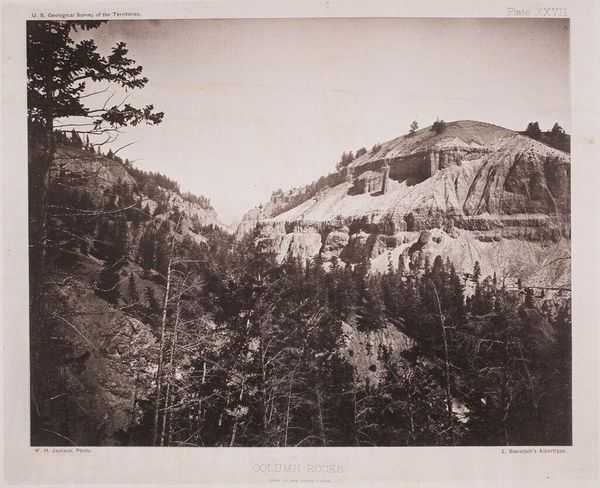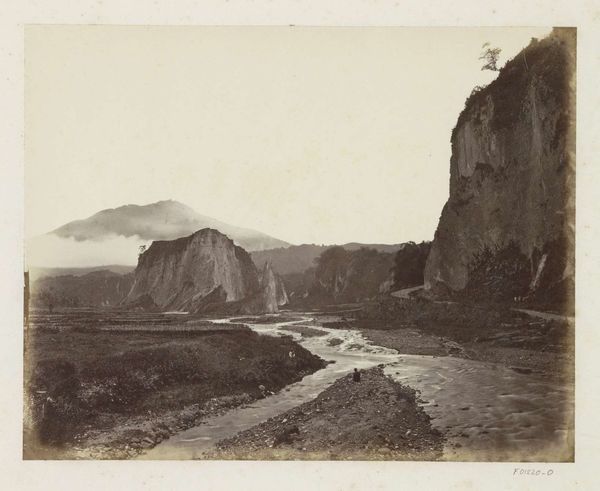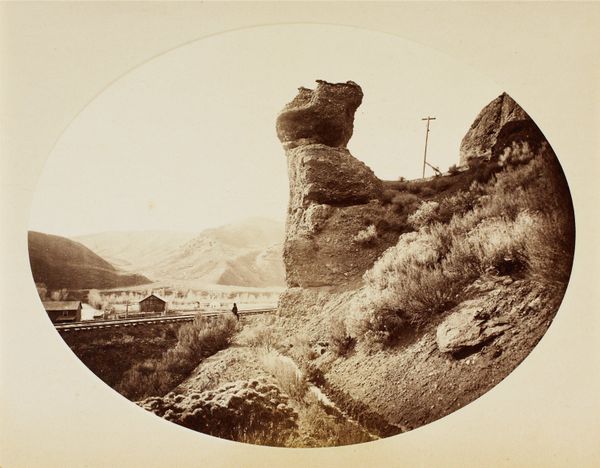
photography
#
pictorialism
#
landscape
#
photography
Dimensions: height 70 mm, width 82 mm
Copyright: Rijks Museum: Open Domain
Curator: Here we have Delizy’s photograph, "Landschap bij Les Baux-de-Provence," dating from 1903-1904. It's a remarkable example of pictorialism in landscape photography. Editor: The light! It's almost bleached out, sun-soaked, like a memory fading in the sepia tones. What strikes me first is the stark contrast between the architectural shapes on the lower left and the organic rock formations in the background. Is it peaceful? Stark? Bit of both, maybe. Curator: Absolutely. Pictorialism, you see, often prioritizes aesthetic effect over strict realism, aiming for atmospheric impressions and emotive qualities. Notice how Delizy manipulates the light and shadow to emphasize form. The tonal range—limited but potent—guides our eye through the composition. The foreground offers structured shapes; it gradually softens into the less defined, rugged rock formations of the Provencal landscape. Editor: It's a very human touch, isn't it? Even though the location—Les Baux—is already stunning, he still filters reality with his own artistic vision. Curator: Precisely! He doesn’t just record a place, he interprets it, molding the topography using the tools available in his darkroom. This pre-dates digital manipulation, yet it shows a similar creative intention. The semiotics of the road, curving sinuously, invites the viewer to physically enter into the photograph. This isn't merely documentation; it's an invitation to contemplation. Editor: I love that notion—an invitation! To me, there's a melancholy undertone, though. That road could lead to a glorious vista or nowhere at all. It leaves room for the observer to inject their emotions, hopes and worries, all into the mix of things. It becomes more than just "pretty" or "skilled." Curator: Yes. The work’s real success is perhaps that it encourages the viewer to become involved, a collaborator even. In a relatively diminutive photographic print, Delizy evokes significant scale and even invites subjective interaction. Editor: It reminds us, delightfully so, that a piece of art isn’t really finished until someone brings their own story to the view.
Comments
No comments
Be the first to comment and join the conversation on the ultimate creative platform.
